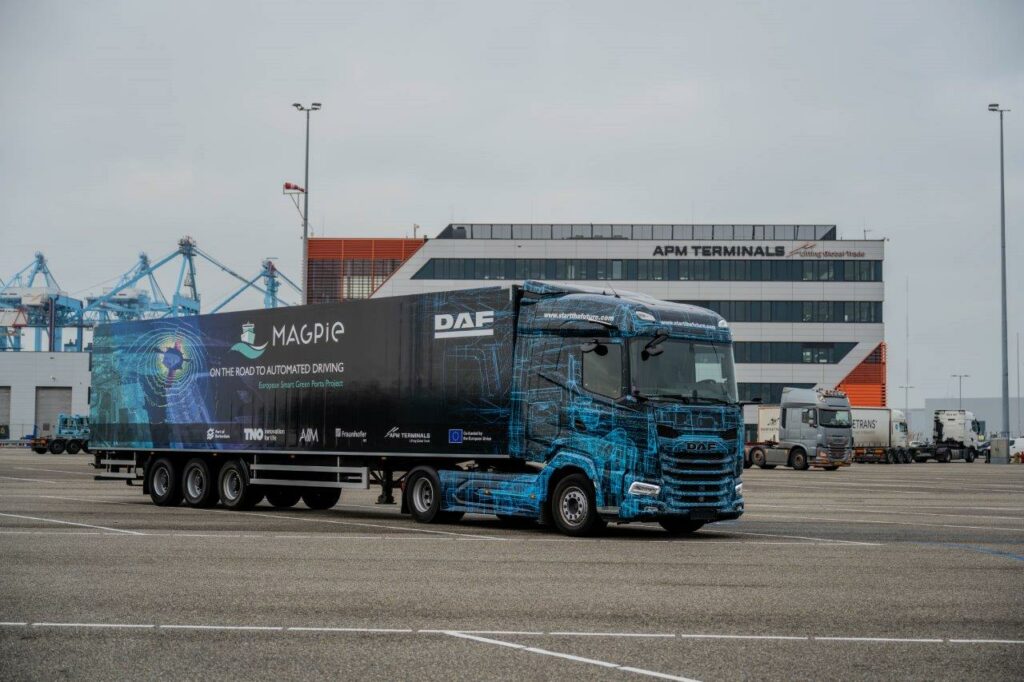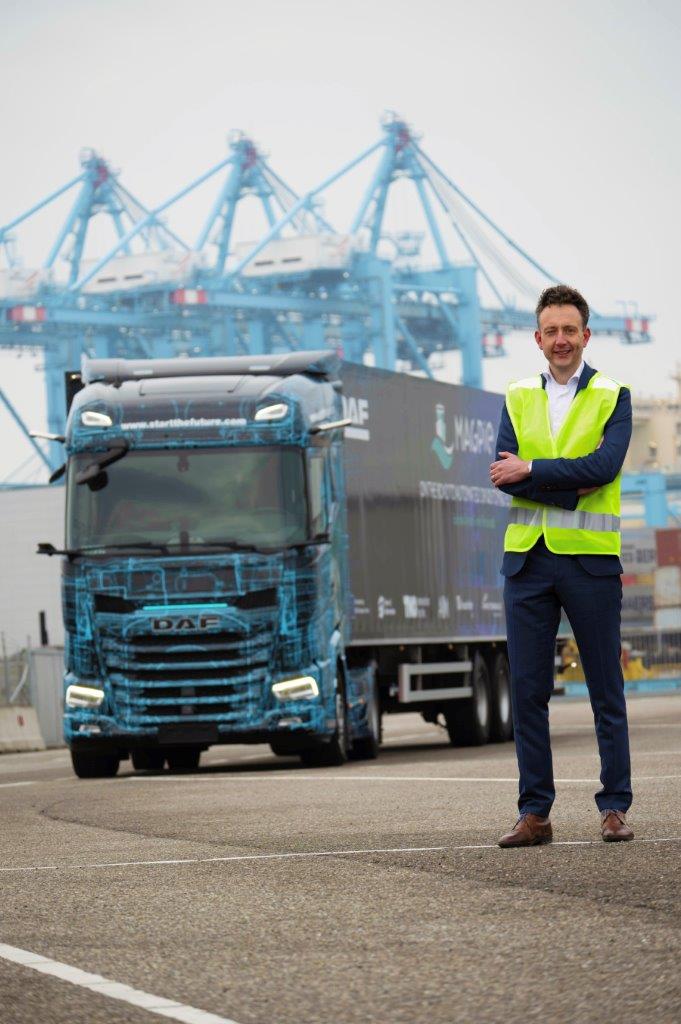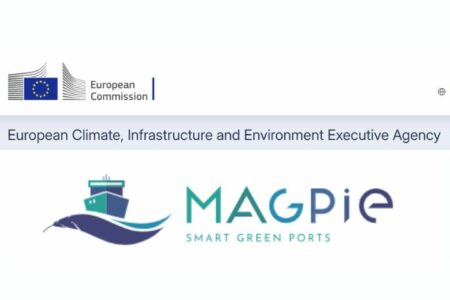Ports will play a major role in using cleaner technologies, green energy carriers, and logistics ideas in maritime transport, port operations, and hinterland transport. This will help reduce greenhouse gas emissions. The Port of Rotterdam, the largest seaport in Europe with connections for all types of transport, is leading the way in the energy transition. Their goal is to become a zero-emission port by 2050.
Trucks are one of the transport modes that will require a reliable supply of green energy. “The aim of the project is to examine how to make transport to, from and around the port more sustainable using smart solutions, with electric self-driving vehicles being an example,” explains Guus Arts, Project Manager Advanced Technology at DAF Product Development. “DAF is providing the truck for the tests.” Partners with whom DAF is working on the project include TU Eindhoven and TNO.
MAGPIE
The project comes out of a collaboration between the port authorities of Rotterdam, DeltaPort (Germany), HAROPA PORT (France: Le Havre, Rouen, Paris) and Sines (Portugal), in partnership with 10 research institutes and over 30 companies in the Netherlands, Germany, France, Portugal, Denmark and Sweden. The research project has been given the acronym MAGPIE: sMArt Green Ports as Integrated Efficient multimodal hubs. One of the consortium’s outputs involves the development of a master plan that sets out how transport in, to and from the ports can be made carbon-free by 2050 – and what needs to be done in this context before 2030 and 2040.
Charging
And there it is, the DAF truck fitted with special sensors. But why is there a driver behind the wheel? This is a self-driving test, isn’t it? “Correct!” says Guus. “The idea is that the truck will perform various manoeuvres itself in a specially marked out zone. At the moment we are preparing the truck for a test in which it will drive to a charging point where it can be recharged automatically. Later on we will also be testing the loading process in which the truck will drive, without a driver, to the charging station at the loading bay in the port.”
Control tower
How does that work? Guus: “You install the required infrastructure in a closed off area to indicate where and in which direction the vehicle can drive. The driving instructions are then given from a control tower, a kind of command centre where we can monitor everything, so the vehicle is always under our supervision. One big advantage is that one person can guide and monitor multiple vehicles at the same time. When the truck has been given the required instructions it plots the route it needs to follow and it can do that very accurately.”
Efficient use of capacity
What is the added value of self-driving vehicles in these tests? Why is there no driver behind the wheel? Guus: “Given the increasing shortage of drivers these days, we want to achieve the most efficient use of driver capacity by automating as many driver tasks as possible. In addition, the behaviour of a self-driving vehicle is more predictable and therefore safer. We’ve been working on this for years already in features like cruise control, brake assist and different kinds of safety systems, such as lane departure warning. Enabling a truck to charge itself is another of those features.” The test programme is providing DAF with valuable information. Guus: “We are able to explore many possibilities, such as smart charging, and gather more information about self-driving vehicles.”
New role for drivers
Will it make drivers redundant in the long run? Guus: “Not a chance. These innovations will allow drivers to focus more on the kind of work in which only they can excel and where they can make a real difference. A self-driving vehicle driving around a closed-off area cannot be compared with having the same vehicle drive itself through a city with lots of other road users. To ensure optimal safety in those situations, we still need a driver behind the wheel as well.”




